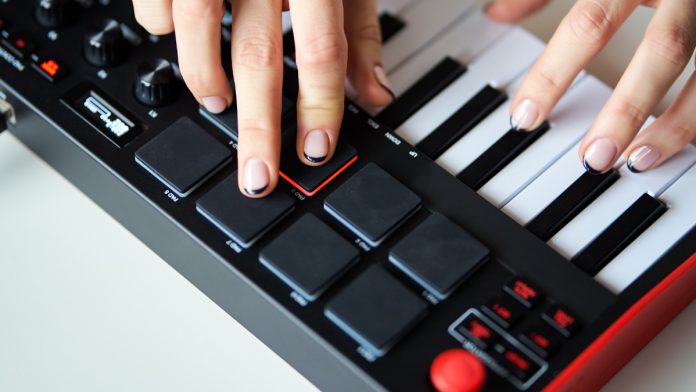The Electronics and Technology Behind Touch‑Sensitive Keyboard harnesses advanced sensor arrays, swift data conversion, and intelligent processing to deliver a responsive, expressive interface. This technology transforms traditional keyboards into dynamic instruments capable of interpreting nuanced touch and pressure variations. The result is a refined playing experience that inspires creativity while ensuring precision and versatility for modern musicians.
| Table of Contents | |
|---|---|
| I. | Advanced Touch Sensing Technologies |
| II. | Multi-Touch and Pressure Sensitivity Arrays |
| III. | High-Speed Analog-to-Digital Conversion (ADC) |
| IV. | Signal Conditioning and Noise Reduction Circuits |
| V. | Embedded Microcontrollers and Real-Time Processing |
| VI. | Digital Signal Processing (DSP) Techniques |
| VII. | Haptic Feedback Systems |
| VIII. | Low-Power Electronics and Energy Management |
| IX. | Robust Calibration and Adaptive Algorithms |
| X. | High-Speed Communication Interfaces |
| XI. | Integration with Digital Music Systems and MIDI Protocols |
Advanced Touch Sensing Technologies
Innovative sensor designs form the core of the touch‑sensitive keyboard, detecting even subtle finger movements with pinpoint accuracy. Advanced capacitive and resistive sensing methods translate touch into musical expression, offering unmatched dynamic response. These breakthroughs in smart instrument interfaces exemplify the Electronics Behind Touch‑Sensitive Keyboard by seamlessly converting human gestures into actionable signals, thereby enhancing performance reliability and user interactivity.
Multi-Touch and Pressure Sensitivity Arrays
Multi‑touch capabilities paired with pressure sensitivity arrays enable simultaneous note recognition and dynamic velocity control. By capturing varying degrees of pressure, these arrays allow musicians to add articulation and expression to each key press. This innovative setup assures that every interaction on the touch‑sensitive keyboard corresponds to a rich, expressive output, perfect for modern musical compositions and live performances.
High-Speed Analog-to-Digital Conversion (ADC)
Rapid high‑speed ADC systems in the touch‑sensitive keyboard convert analog signals from keystrokes into digital data in real time. This process is crucial for maintaining accurate timing and dynamic expression in musical performances. It embodies the “Technology Behind Touch‑Sensitive Keyboard” by ensuring that the nuances of finger pressure and movement are faithfully captured and transmitted for sound generation without perceptible delay.
Signal Conditioning and Noise Reduction Circuits
Dedicated signal conditioning and noise reduction circuits are essential for maintaining clarity and precision. These circuits filter out unwanted interference and stabilize the key signals so that only the intended musical information reaches the processing stage. This robust design ensures that the touch‑sensitive keyboard delivers consistent performance, even in environments with electrical noise or rapid playing dynamics.
Embedded Microcontrollers and Real-Time Processing
Embedded microcontrollers execute real‑time signal processing to manage the fast data flow from touch sensors. Their optimized firmware continuously interprets input signals, ensuring immediate and precise sound generation. Incorporating the “Electronics Behind Touch‑Sensitive Keyboard” at its heart, these controllers balance power efficiency with high performance, delivering the responsiveness essential for live musical improvisation.
Digital Signal Processing (DSP) Techniques
Advanced DSP algorithms refine raw data from the keyboard into actionable control signals for sound synthesis and modulation. By applying filtering, equalization, and dynamic adjustments, these techniques support nuanced musical expression. This process reflects the Technology Behind Touch‑Sensitive Keyboard by ensuring that every nuance of touch is accurately and musically interpreted, maintaining high fidelity in sound production.
Haptic Feedback Systems
Haptic feedback systems integrate miniature actuators beneath the keyboard surface to provide tactile responses with every press. This technology bridges the gap between digital response and human touch, simulating the physical feedback of traditional instruments. Musicians receive immediate sensory cues, enhancing their performance accuracy and expressive control on the touch‑sensitive keyboard.
Low-Power Electronics and Energy Management
Efficient low‑power circuitry and smart energy management techniques are vital for portable and continuous use. Optimized power consumption extends battery life while ensuring uninterrupted performance. These design considerations are especially important in smart musical instruments, where sustained responsiveness and precise electronic operation underpin the touch‑sensitive keyboard’s overall reliability.
Robust Calibration and Adaptive Algorithms
Self‑calibration mechanisms and adaptive algorithms continuously monitor and adjust sensor performance to compensate for environmental changes and wear. This dynamic calibration preserves playability and accuracy over time, ensuring that the touch‑sensitive keyboard remains reliable and consistent. Such adaptability is key to maintaining the instrument’s high standards in diverse performance conditions.
High-Speed Communication Interfaces
High‑speed communication interfaces, such as USB, Bluetooth, and dedicated MIDI ports, facilitate rapid data exchange between the keyboard and external devices. These interfaces support real‑time control and integration with digital audio workstations, ensuring minimal latency. Seamless connectivity is crucial for modern studio setups and live performances, reinforcing the keyboard’s role as a central element in smart musical instrument networks.
Integration with Digital Music Systems and MIDI Protocols
The final integration stage aligns the touch‑sensitive keyboard with digital music systems through standardized MIDI protocols and advanced software compatibility. This connectivity enables musicians to control synthesizers, recording software, and effects units seamlessly. The resulting interoperability not only simplifies studio workflows but also empowers performers to explore new creative possibilities, firmly establishing the touch‑sensitive keyboard as an indispensable tool in today’s digital music landscape.

